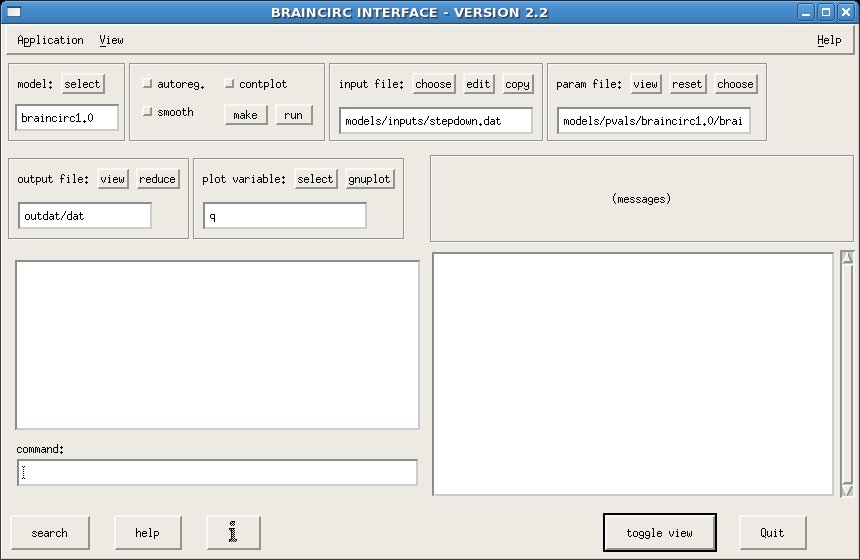The philosophy behind the environment
A key feature of the environment is that the processes of construction of models at a logical level, and of simulation of a particular numerical model, are separated. Thus it is possible to explore model structure at the level of its inputs, outputs and variables without the model being completely specified.
The environment is designed for three purposes. The first is to make it easy for non-mathematicians to input models as they might find them in published work, or on the web. A small ODE model, such as the Lorentz or the glycolytic oscillation models (both available here) can be constructed and run within a few minutes once you learn how to use the interface.
The second is to manage large and complex models and keep track of their structure and submodels within them. There are a lot of features of the environment (which I will gradually document) connected with this idea. Central is the notion that processes, (e.g. transport processes, or chemical reactions, or charge flows) rather than differential equations, should be central when designing models. The differential equations are then derived from the processes automatically by the environment. Of course it should also be easy to input models as a set of differential and algebraic equations as well.
The third is to allow the future incorporation of more sophisticated tools for analysis of qualitative models, i.e. models whose processes have been specified, but with possibly absent functions/parameter values, so that simulations cannot be run. There is the potential for considerable analysis at this level of model structure alone, and some features of model behaviour will be predictable without simulation. In the not-too-distant future qualitative model analysis tools capable of going much further than the current tools, will be incorporated into the environment.
